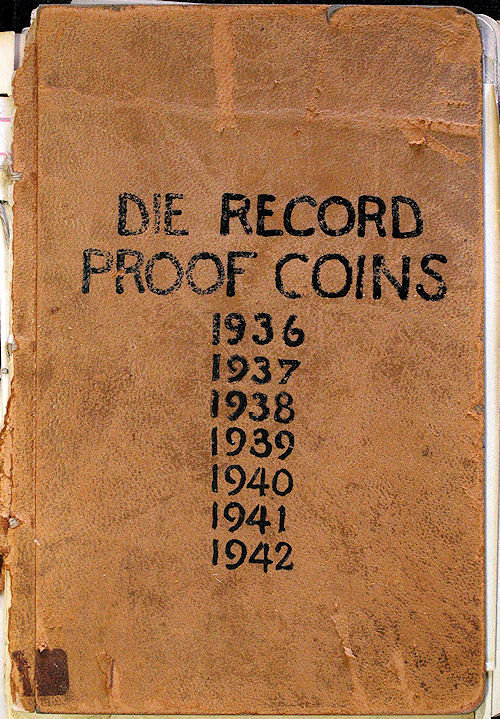US Mint "pocket notebooks" are key to fully understanding how and why of coinage.
 RogerB
Posts: 8,852 ✭✭✭✭✭
RogerB
Posts: 8,852 ✭✭✭✭✭
In the post "Here's what it took to get a gold ingot ready to make Eagles" there is an image of two pages from the pocket notebook of someone (probably a foreman) in the Coining Department. This person was directly involved in the rolling operations that converted a small ingot of metal into strips suitable for punching coin blanks.
Correspondence indicates that all operations managers had such notebooks. These included all the details about reductions, dies, production, melting and refining, coining, counting, weighing and all the other daily work that was required. Once, they were ubiquitous in all Treasury Bureaus. We have several dozen from Treasury Cash Clerks and assistants. But only a very few exist for any US Mint.
These little - about 4x6-inches - utilitarian notebooks, smudged, soiled and tattered, contained the distilled essence of minting.

Comments
In the '70's while working at ANACS, I had my hands on and was allowed to hand copy die information from one of the large ledgers that was at the Treasury Dept. Office of Technology. That's where we showed coins to government authenticators. I wonder what happened to those books.
That's incredibly cool. I've often wondered whether there was an analogue to these at the early mint, and what we'd learn if we were to find one...
What is now proved was once only imagined. - William Blake
There are scraps of foolscap mimicking the data in later notebooks - but I'm not aware of enough to be of meaningful value.
I just looked up some of the things I wrote. Information on Liberty Seated Dollars I copied was published in the Gobrecht journal in 1993. I just got a copy of the Osborn/Cushing reference and it will be interesting to compare what they found. I suspect that they are going to list some die states as completely different dies. For example, for 1868 the Mint Records list 3 each obverse/reverse dies while the book has 5 obverses and 4 reverses. Other entries from the Mint show more dies than in the book. In my 1993 article wrote that I had not identified separate dies and guessed that not all the dies for a specific year were used.
I expect the Gobrecht Journal is on the Newman Portal. Their book has certainly advanced our understanding of this coin series.
Hopefully, it is based on objective data and not entirely on subjective examination of coins -- there are too many ways to self-deceive ourselves.
The article can be read here: https://nnp.wustl.edu/library/book/514063?page=33
These notebooks can be a treasure trove. I went to work for a company thirty years ago... a aerospace technology based company. I was shocked to find that documented processes and procedures did not exist. The operators though, had notebooks and kept all the information for assembly and testing. It was these I used as the base for a fully documented system. Cheers, RickO
That was the situation at all the US Mints until the mid-20th century. Much continues to be passed down from one generation of worker to another.
Wouldn't it be great to own one of those.!.!
An original might easily sell for over $100,000 at auction. Fortunately, they are stored in a secure place and will never be sold.
Discovery of the pocket notebook (pictured above) was a key element in deciding to research and write a detailed book on 1936-1942 proof coinage.